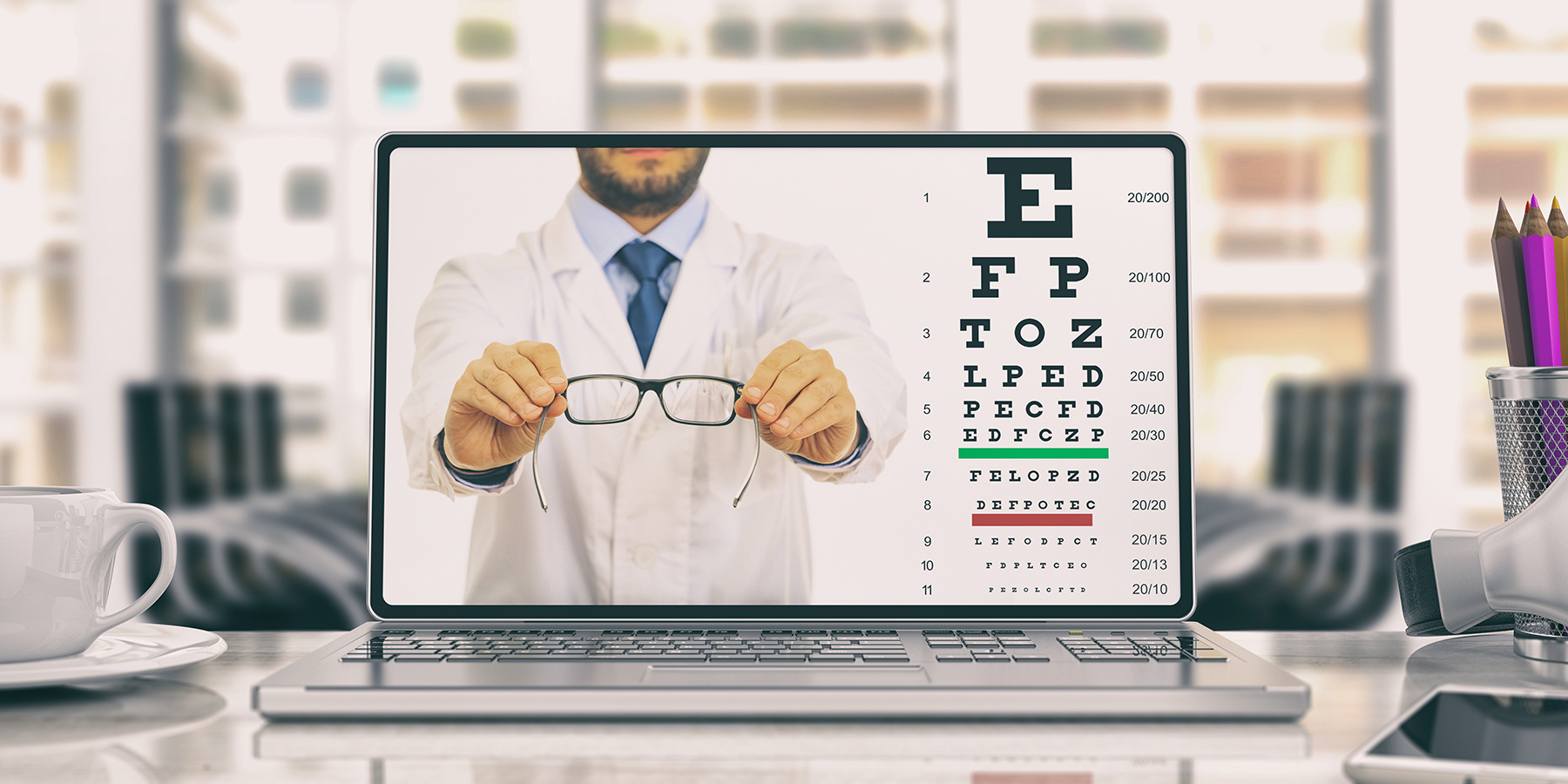Telehealth Promotes Safe, Prompt Eye Care during COVID-19

The COVID-19 pandemic challenges everyone to navigate life in new ways. Bascom Palmer Eye Institute is using virtual visit services to give many patients the care they need in the safety of their own homes.
“Telemedicine should feel just as pleasant as having a Skype or a FaceTime call with your grandkids. It’s unbelievable how much we learn just by talking to and looking at the patient,” says Ranya G. Habash, M.D., an ophthalmologist who leads Bascom Palmer’s telehealth program.
“Our priority is keeping patients and healthcare workers safe,” says Dr. Habash. “So, our physicians review their upcoming appointments and offer patients a telemedicine video call to keep them cared for, but safely at home.”
What happens during a telehealth call?
If a telehealth video call is appropriate, a technician sends information to help the patient prepare for the call. Fifteen minutes before the virtual appointment, the technician calls to ensure that the patient is ready. They ask questions and complete the patient’s chart, as they would during a normal office visit. The physician then logs into the telehealth system remotely to review the patient’s chart. Dr. Habash explains that, like a Zoom video conference meeting, multiple screens are open so that the patient, technician and doctor can see and communicate with each other.
Dr. Habash cites two examples of telemedicine’s life-saving, time-saving abilities.
“An immunocompromised patient with lupus was told by her doctor that going to the ER would endanger her life. She took a picture of her eye with her phone and sent us the picture. I looked at the photo, then performed a video call. In 10 seconds, I could tell she had a ruptured blood vessel and didn’t need to come to the ER. With telemedicine, a picture is worth a thousand words and a video call is worth a thousand pictures.”
An early adopter of telemedicine, Dr. Habash has used the technology for years. She recently conducted a doctor-to-doctor consultation via telehealth on a patient in New York. “The patient couldn’t leave New York, so I spoke with her physician and reviewed her information via video call. I gave direction to the physician, who could then treat the patient onsite.”
While a telemedicine exam is not as in-depth as an office visit, “We have to think outside of the box and offer creative solutions. Many of our patients are older and high risk. The key thing is keeping them safe and at home, if possible,” says Dr. Habash.
Visit Bascom Palmer Eye Institute, or call 888-845-0002.
Nancy Moreland is a contributing writer for UMiami Health News. She has written for several major health care systems and the Centers for Disease Control and Prevention. You can also find her writings in the Chicago Tribune.
